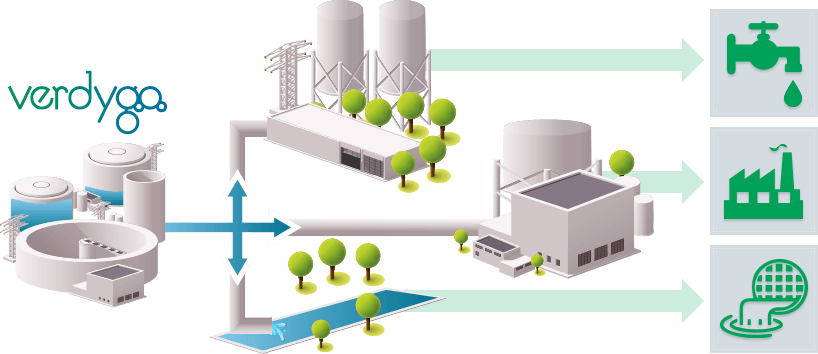Technical facts and figures
Designing your own Verdygo solution
Verdygo is a design and construction technique in which flexibility and modularity are key factors. That means that any chosen treatment technology can be applied. Every Verdygo plant consists of modules that are built above ground and connected with a simple plug & play system. This makes it very easy to create a plant tailored to your specific needs. And when external factors – and consequently your needs – change, your plant can be adjusted in a quick, inexpensive way. The use of modules and plug & play connections also makes it possible to rebuild only parts of your existing sewage treatment plant.
Feeding step
In the feeding step, communal and industrial wastewater is collected and led through a bar screen installation, grit chambers and a fine grit screen. Grit, sand and particles such as leaves, branches, wipes and stones are removed here.
The modularity of Verdygo enables you to easily respond to demographical developments or other factors that can cause growth or decline in the water supply. No expensive adjustments are needed; simply adding or removing screens is enough. Redundant modules can be stored or reused in other sewage treatment plants with the plug & play connections.
Treatment step
In this stage of purification, the wastewater is treated biologically. Any technology of your choice can be applied in a Verdygo plant. In the first ever built Verdygo plant, the Nereda® technology is used due to its proven benefits.
As the water world is continuously innovating upon existing technologies, Verdygo is built to be ready for any new technological developments. The above ground modules can be exchanged easily, making Verdygo a very flexible and future proof design and construction technique.
Upgrading effuent
While the majority of effluent is being discharged into surface water, there are many other applications for purified wastewater. It can be used in the industrial or agricultural sector or be purified even further to eventually become drinking water. In the final stage of the sewage treatment plant, it can be upgraded to be optimally prepared for its next role in the water cycle.






